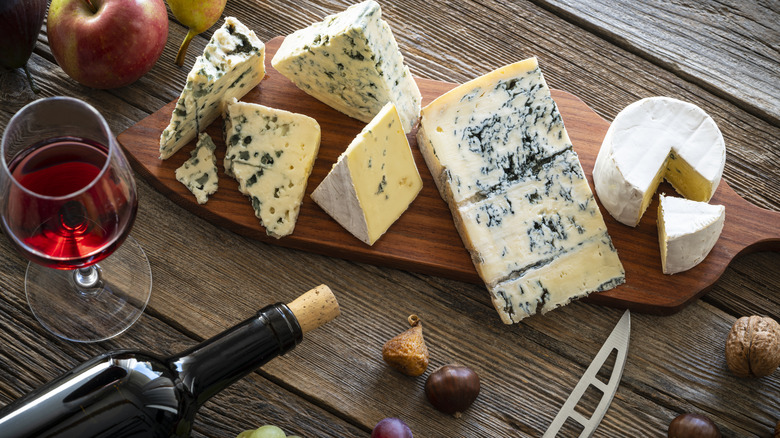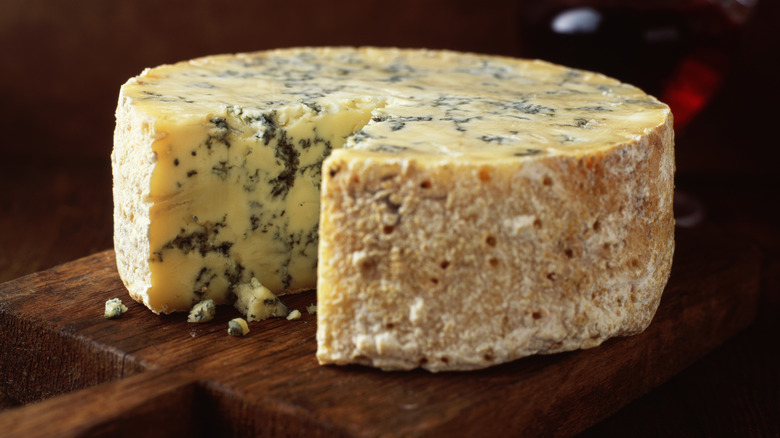Mold Serves An Important Purpose When It Comes To Making Cheese
Given all the precautions usually taken to avoid ingesting mold, it may sound odd to encourage consumption of moldy cheese. However, mold is an important ingredient for what are known as blue cheeses, like gorgonzola. Otherwise, you should throw away moldy soft cheese, such as goat cheese, ricotta, or crumbled feta. While traditional blue cheeses like Roquefort hail from France, in recent years blue cheese production increased substantially stateside. Wisconsin in particular is now hailed as the blue cheese capital of America.
Blue cheese takes on its unique coloration and smell due to the introduction of a mold known as penicillium during the cheesemaking process. Penicillium will be added to either the milk or the cheese curd, depending on the type of blue cheese being produced. As the penicillium works its way through the cheese, it creates enzyme reactions that result in making the cheese's protein, known as casein, creamier. The enzymes created by penicillium also spread amino acids into the nooks and crannies of the cheese; anywhere the acids touch takes on the classic blue coloring.
Not only is penicillium safe to eat — it's a moldy cousin to penicillin, after all — but recent studies revealed that cheeses produced with mold can potentially have anti-inflammatory agents, helpful in preventing heart disease.
Cheese made with mold does go bad
Penicillium's presence in blue cheese does not mean it's immune to spoiling, and its mold can spread to other cheeses. Blue cheese should be kept separate from any other stored cheeses so that the others don't get contaminated. If using correct storage methods, it will keep in the refrigerator for up to 4 weeks. Just make sure to wrap any leftover cheese tightly to avoid rapid degradation. It's recommended to keep blue cheese in its original paper wrappings; if the cheese was wrapped in plastic instead, rewrap in something more porous. This allows the cheese to avoid taking on unnecessary moisture that can encourage the kind of mold that you don't want.
You know your blue cheese has gone bad if it exhibits moldy spots of colors other than blue. Blue cheese is notoriously smelly, and its aroma will only become more pungent with time. However, spoiled blue cheese will smell more strongly like ammonia than the pleasant funk of a fresh variety. If you spot or smell something off, discard the leftover blue cheese immediately.

